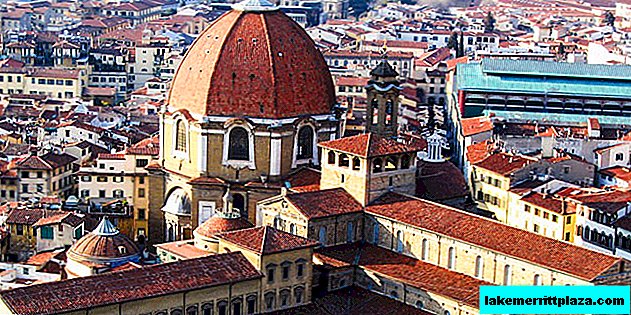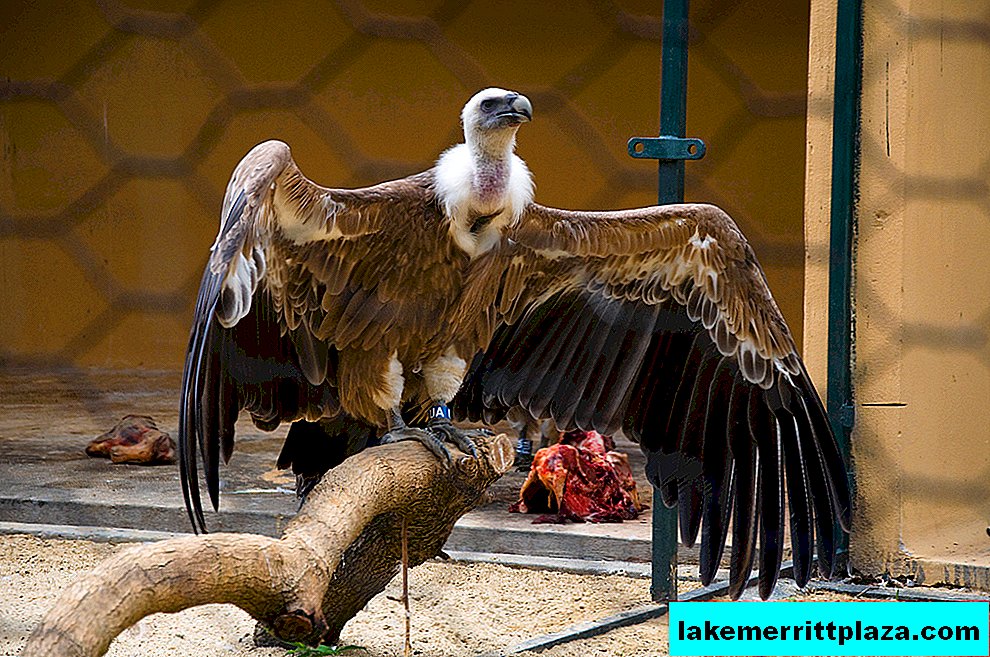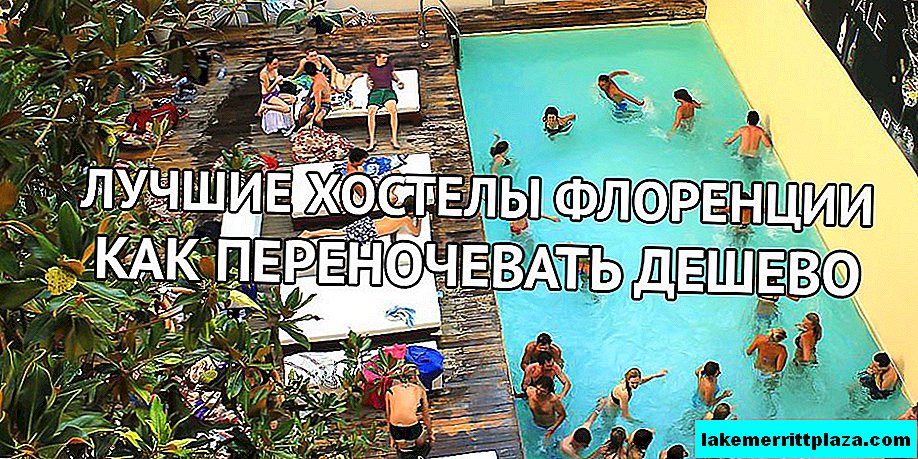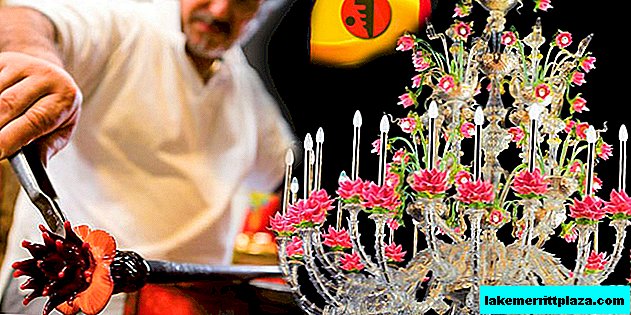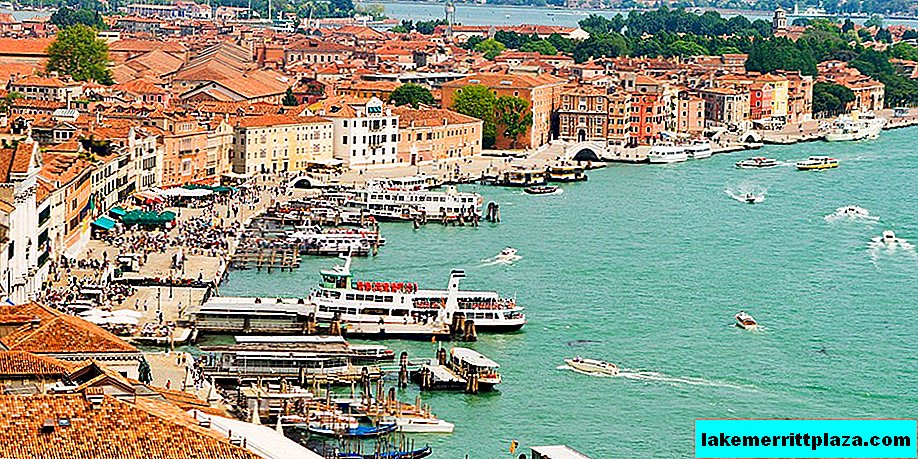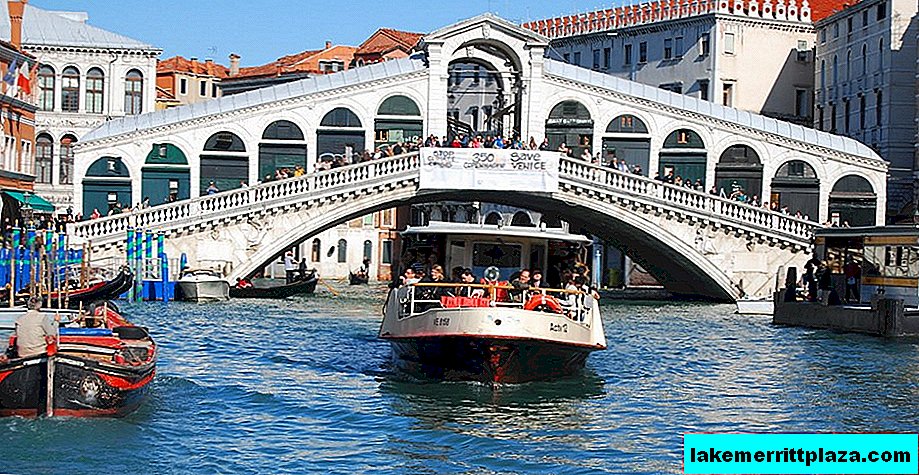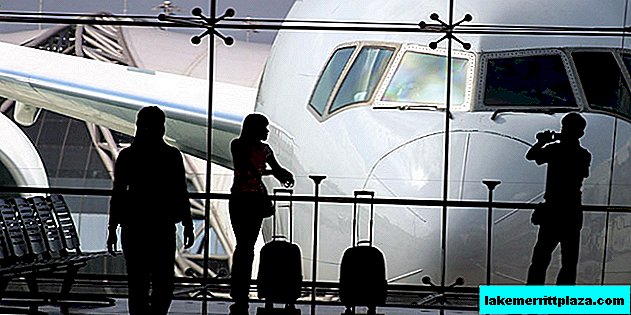Verona is a romantic city where the events of the saddest story in the world took place. People come here to be inspired by the local atmosphere, enjoy architecture and historical monuments, escape from everyday worries and fuss.

Verona
The city of Romeo and Juliet is located in northern Italy, in the Veneto region, with its capital in Venice. The population of Verona is about a quarter of a million people, and the annual number of tourists coming for romantic legends exceeds three million. I have prepared a guide to Verona for you. Let's get started.
Map of Verona Attractions
 Arena di Verona
Arena di Verona
 Juliet's House
Juliet's House
 Tomb of Juliet
Tomb of Juliet
 House Romeo
House Romeo
 Porta Borsari
Porta Borsari
 Monument to Dante
Monument to Dante
 Convent of San Francesco Al Corso
Convent of San Francesco Al Corso
 Cathedral
Cathedral
 Church of Santa Maria Antica
Church of Santa Maria Antica
 Basilica of San Zeno Maggiore
Basilica of San Zeno Maggiore
 Castelvecchio Castle
Castelvecchio Castle
 Archaeological Museum
Archaeological Museum
Verona Attractions
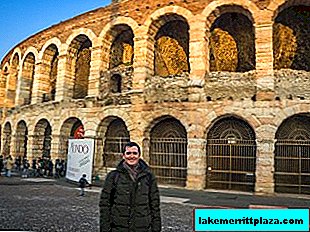
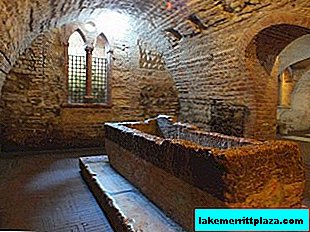
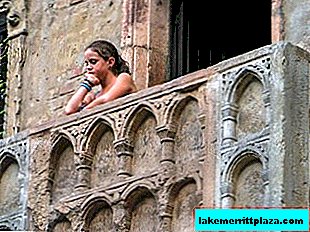
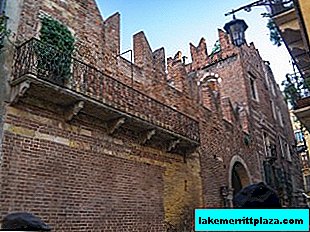
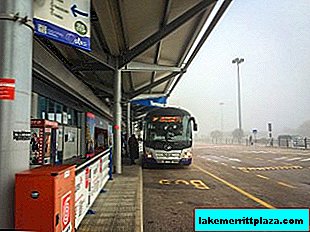
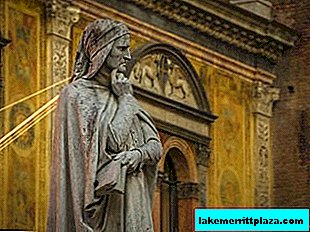

Arena di Verona
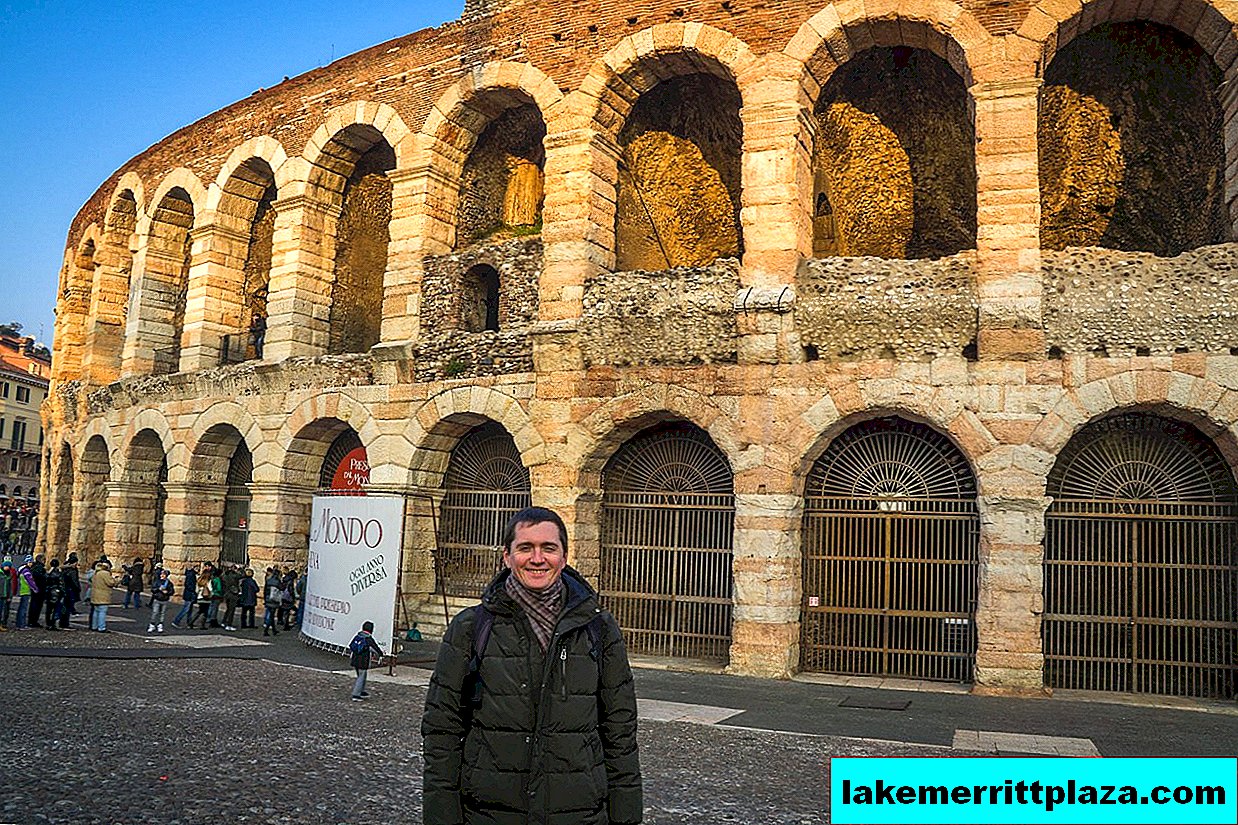
Arena di Verona
Of all the Roman amphitheaters, this one is best preserved. The arena, built in the 1st century AD, saw antique performances and gladiatorial fights. Heretics were burned here in the Middle Ages, then there were bullfights, the fashion of which was brought from Spain by Borgia.
Now the Arena di Verona (Arena di Verona) - a concert venue, its capacity is 30 thousand spectators. It hosts annual opera festivals, performances by the best opera companies. Guided tours around the arena (ticket € 10).
Learn more about the Arena di Verona ...
Juliet's House

Juliet's House
The most successful hoax in the tourist world is the house of Juliet (Casa di Giulietta) in Verona. This is a visiting card of the city. The medieval house of the Capello family has nothing to do with the famous Shakespearean history, but it does not bother anyone. Crowds of lovers gather in the courtyard of the house to see the tiny balcony, touch the chest of the sculptural image of the heroine. There is also the opportunity to talk with a special phone with Romeo or Juliet. You throw a coin into the machine, and the answer will not take long.
Inside the house there is a museum, the exposition of which acquaints with the life of a rich urban family in the Middle Ages. The walls and ceilings are decorated with frescoes, there are several paintings on the motifs of the famous play, in the rooms you can see medieval ceramics, ancient chests, furniture. Entrance to the museum - € 6.
Read more about Juliet's House ...
Tomb of Juliet
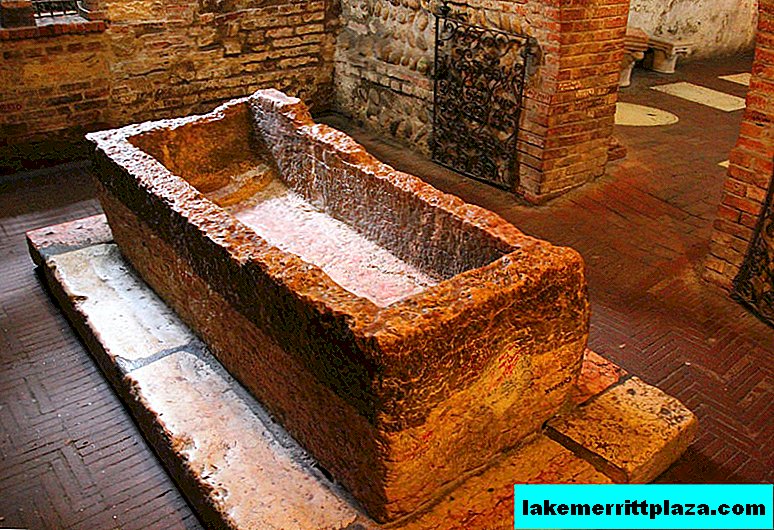
Tomb of Juliet (Tomba di Giulietta) (photo: Anura)
If there is a house of Juliet, then there must be a grave (Tomba di Giulietta). A stone sarcophagus on the territory of an ancient Franciscan monastery long ago took the place of the grave. This place is also actively visited by tourists from all over the world. Interestingly, the "sarcophagus" of Juliet Capulet was first described in the XIV century. In addition to legends and traditions, there are no exact indications. But the atmosphere here is unusually romantic.
Read more about Juliet's Tomb ...
House Romeo

House Romeo
The house of Romeo (Casa di Romeo) was built in the XIV century. Despite the efforts of the municipality, the owners categorically refused to sell it for the museum. I must say that in the Middle Ages the counts of Nogarol owned the house. In the family tree of their family there was a story vaguely reminiscent of the plot of a Shakespeare play. This gave reason to consider this place the “House of Romeo."
Read more about the Romeo House ...
Porta Borsari
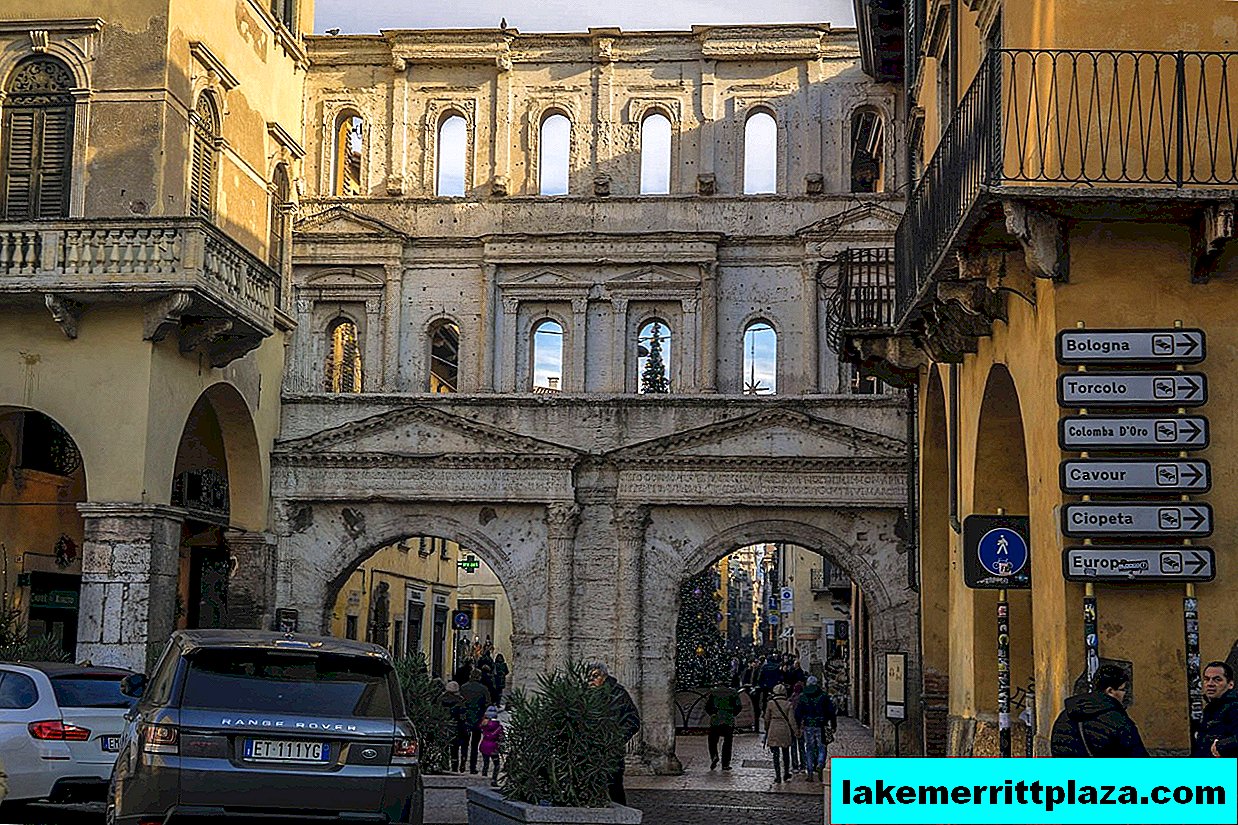
Porta Borsari
The southern city gate, built in Roman times, today begins or ends the main street of ancient Verona. From an architectural point of view, Porta Borsari is an example of classical Roman architecture: vaulted openings, triangular pediments above the entrances. On the street of Port Borsari are concentrated the architectural masterpieces of the city, a number of popular shops.
Read more about Porta Borsari ...
Monument to Dante

Monument to Dante
Monument to Dante (Monumento a Dante) - a symbolic place, here there are "lost" tourists and the townspeople make appointments. The convenient location (Signori Square) and the Italians' love for the creator of "Divine Comedy" are the key to the monument's popularity. It was staged for the 600th anniversary of the poet.
Read more about the Dante Monument ...
Monastery of San Francesco Al Corso

Monastery of San Francesco Al Corso
The medieval monastery in Verona was for a long time completely uninteresting to visit. The second life was given to him by the "tomb of Juliet", which attracted many visitors here. At first, the monastic inhabitants were unhappy with such attention. At the beginning of the 20th century, the abbot of the monastery decided to pay attention to the monastery in material gain.
Today in the former monastery of San Francesco Al Corso (Complesso San Francesco al Corso) there is a museum, the main value of which is the ancient frescoes from the collapsing monasteries and churches of northern Italy.
Verona Cathedral

Cathedral
Verona Cathedral (Duomo di Verona) is a wonderful example of Romanesque architecture. It was built in the 12th century. Visitors are allowed daily, during hours when there is no service. Particular attention should be paid to one of the altar paintings - Ascension of the Virgin Mary. The author of this work is Titian himself.
Church of Santa Maria Antica
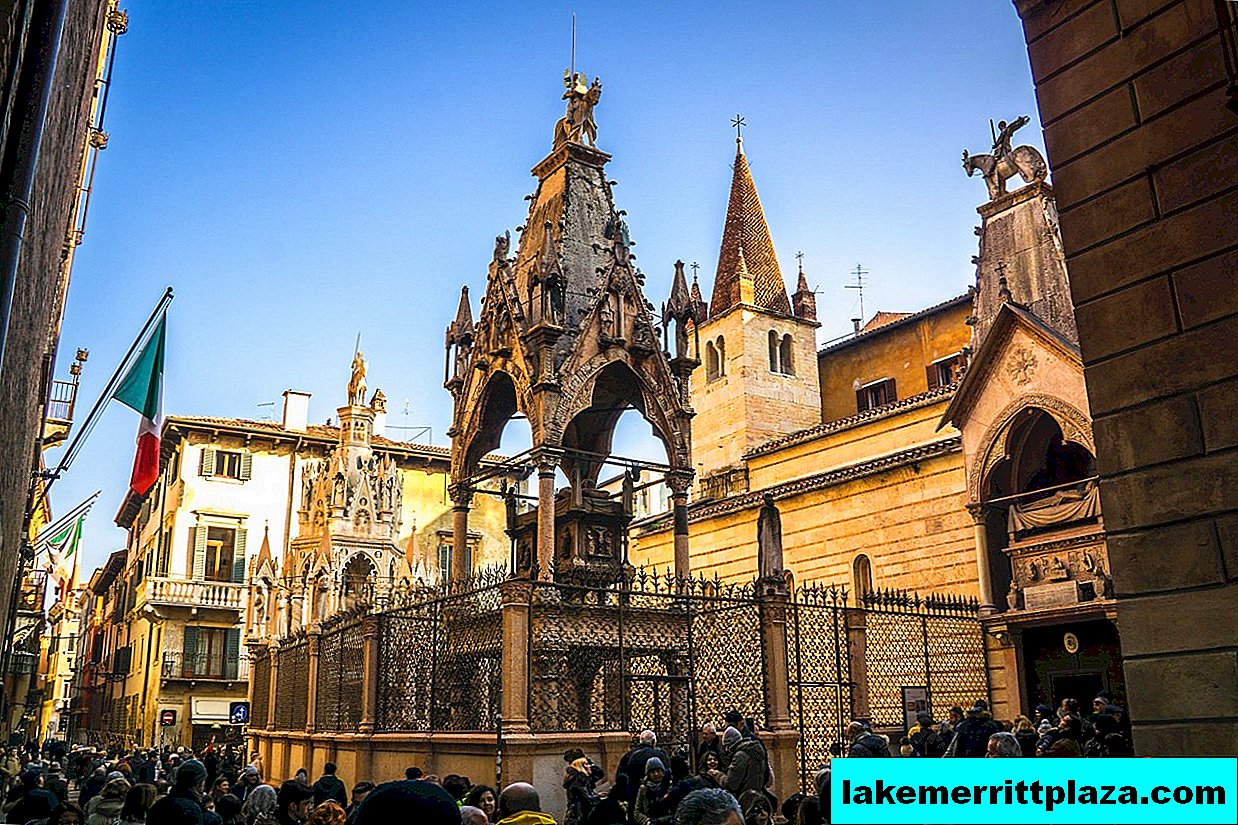
Church of Santa Maria Antica
Santa Maria Antica (Chiesa di Santa Maria Antica) is a palace chapel of the rulers of Verona from the Scaliger family, built in the XII century. Pay attention to the interior of the temple, where Romanesque and Baroque elements are mixed. Next to the church are Gothic tombstones of the rulers of Verona (arch of the Scaligers). The tombstone of Kangrad I Della Scala adorns the entrance to the church.
Church of San Zeno Maggiore
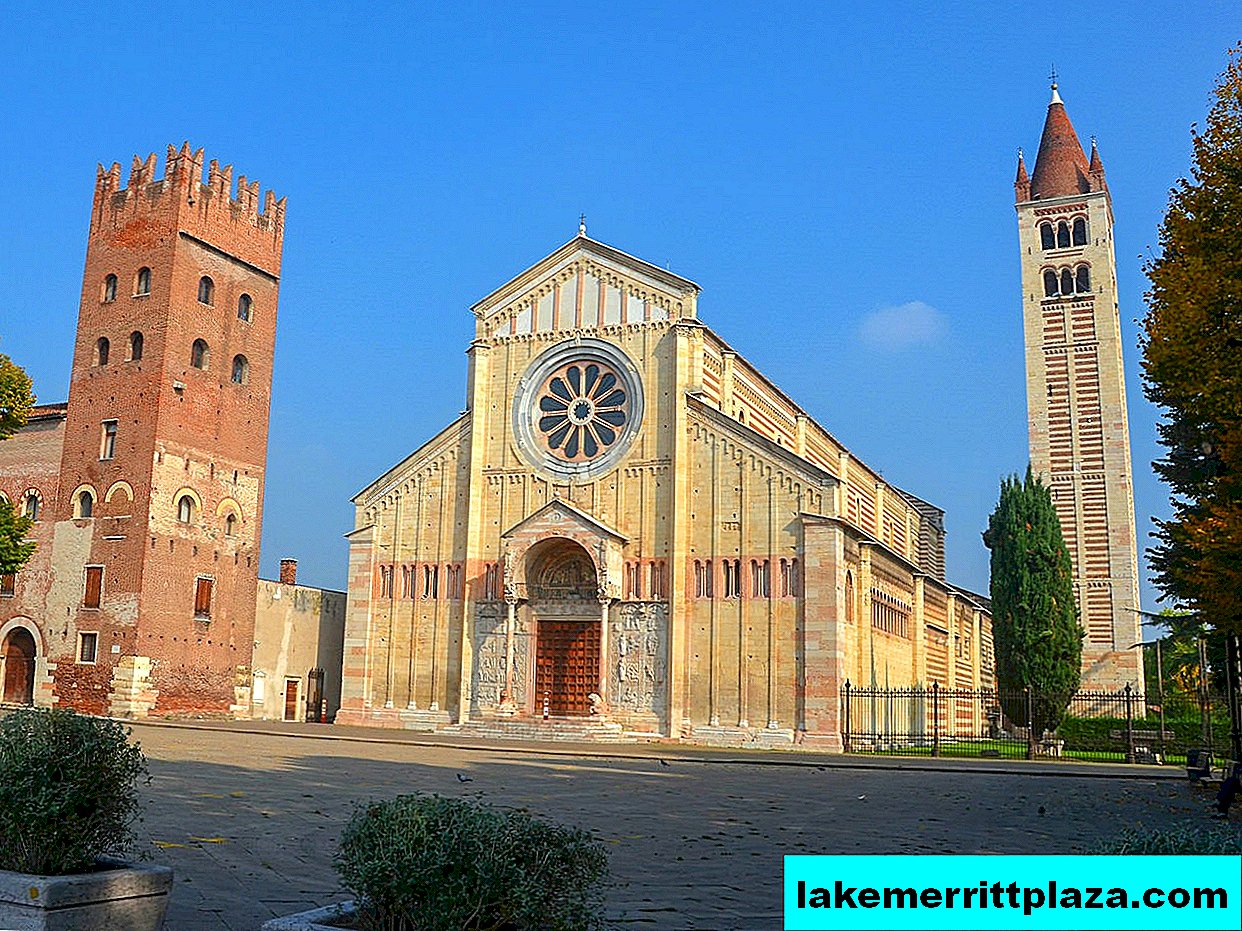
San Zeno Maggiore Church (photo: Giorsch)
The San Zeno Maggiore Basilica is the resting place of the relics of the first Bishop of Verona Zinon. After numerous reconstructions, the church acquired its present form only by the end of the 20th century. In the interior stand out: 2 water-sanctified bowls; a 12th-century font carved from a whole piece of Verona marble .; stone carved altar, which is supported by columns based on the symbols of the evangelists - a lion (Mark) and a bull (Luke) - several snakes. The frescoes of the school of Giotto and Altikiero are restored. In the crypt of the temple you can see the crystal cancer with the relics of Zinon of Veronia.
Castelvecchio Castle

Castelvecchio Castle
The Verona City Museum is located in the medieval castle of Castelvecchio (Castel Vecchio), which was built in 1354-1376. family Scala, then the rulers of Verona. Later, the castle was rebuilt by the Venetians, French, and Austrians.
The exhibition features sculpture, jewelry, dishes, sarcophagi; stunning medieval and Renaissance works of Italian masters are collected. In addition to the main exposition, thematic exhibitions are held. Entrance to the museum - € 6.
Archaeological Museum and Roman Theater
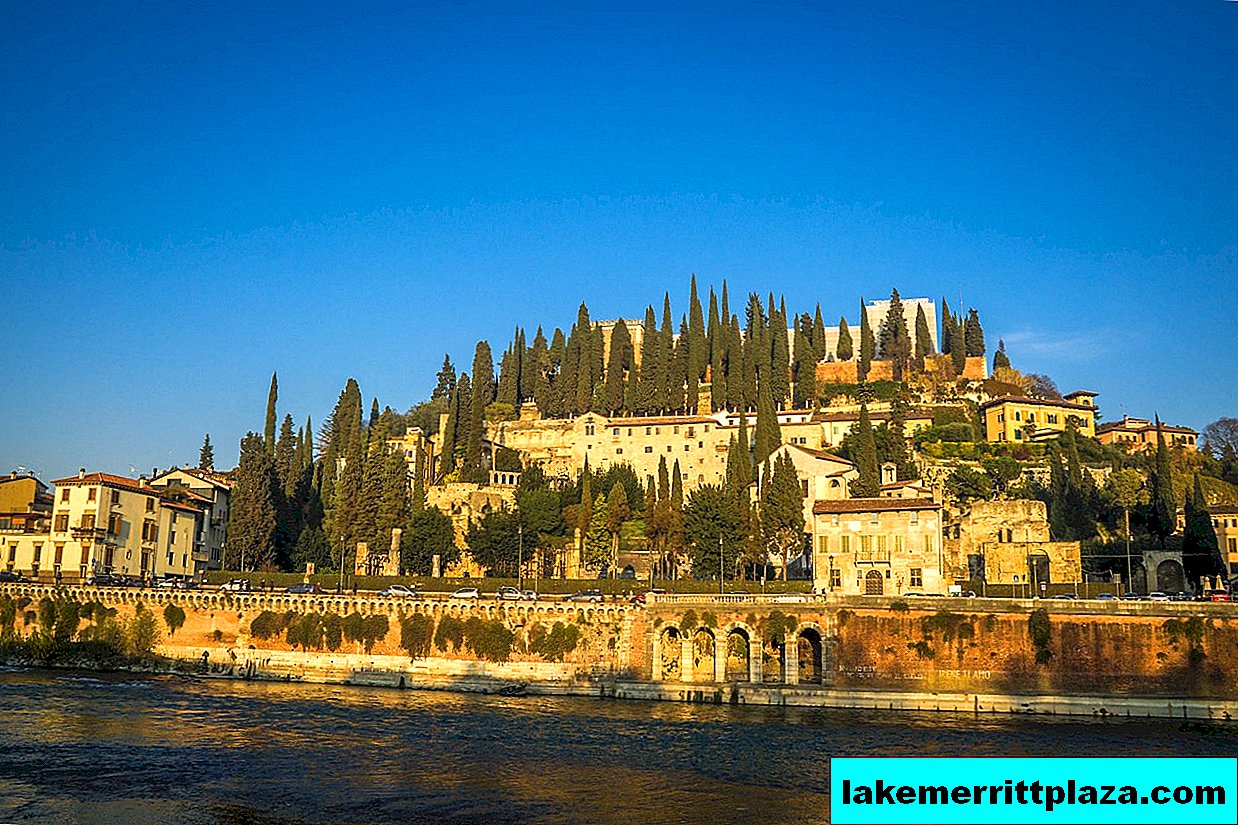
Archaeological Museum
The Archaeological Museum (Museo archeologico) is located in the former monastery of San Gerolamo. The exposition is composed of artifacts provided by private collectors.
Fans of antiquity can see unique mosaics, sculptures, bronze figurines, ceramics, Roman glass vessels. There is a hall dedicated to the Roman epitaphs. In the courtyard there are antique altars, steles and gravestones.
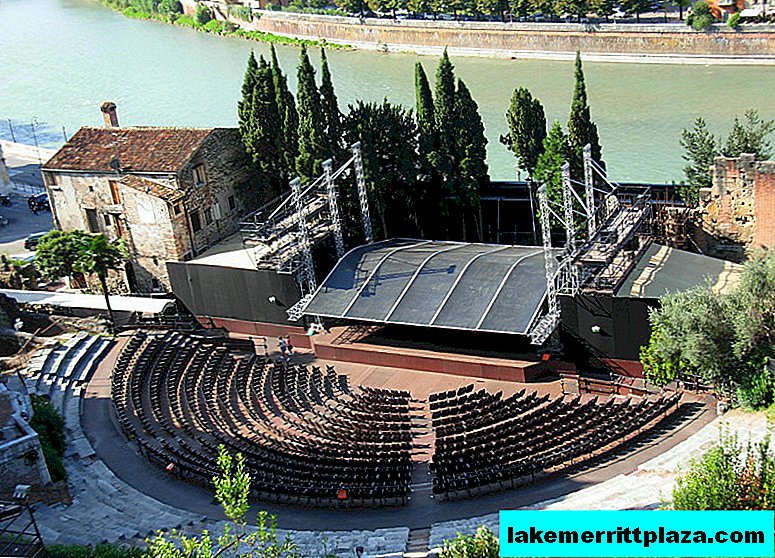
Roman theater (photo: copetan)
Near the museum are the ruins of a Roman theater, which is adapted for a concert venue.
In the vicinity of Verona
 Lake Garda
Lake Garda
 Gardaland
Gardaland
 Safari Park Natura Viva
Safari Park Natura Viva
 Monte Baldo
Monte Baldo
 Verona
Verona
Lake Garda

Garda Lake, photo by Hilde Juengst
Lake Garda (Lago di Garda) - the largest lake in Italy, a paradise for lovers of summer water activities. On the island of Borghese you can explore the castle in the neo-Gothic style. The island of San Biagio attracts hunters, a huge number of hares live here. The sights of the lake include thermal springs, known since Roman times.
Amusement park "Gardaland"
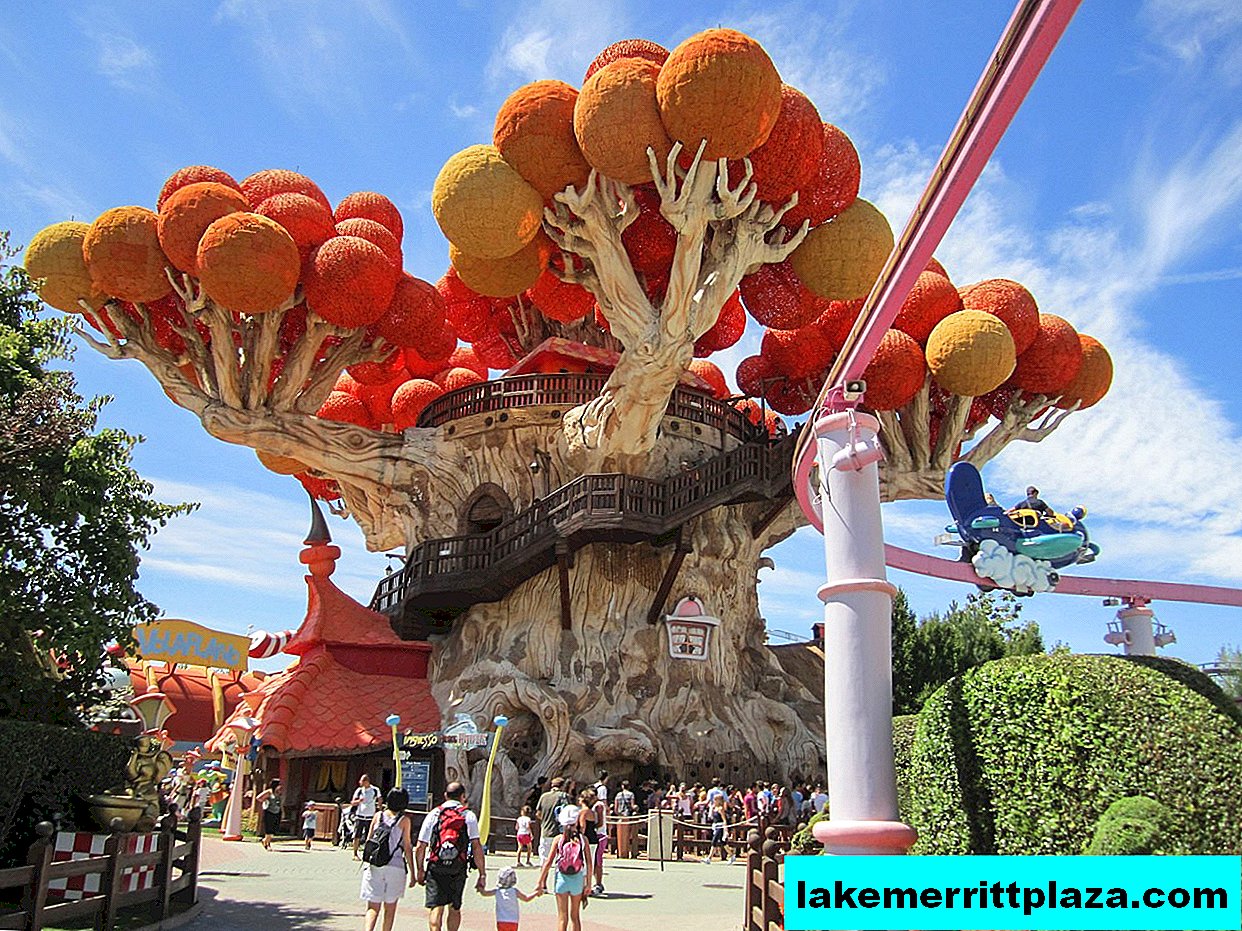
Gardaland Amusement Park, photo by Felice Iannazzo
On the shores of Lake Garda is a large amusement park "Gardaland" (Gardaland). A huge number of different entertainments for children and adults, an excellent saltwater aquarium. Daily bright shows on various topics. There are several restaurants on site, as well as a hotel.
Safari Park "Natura Viva"
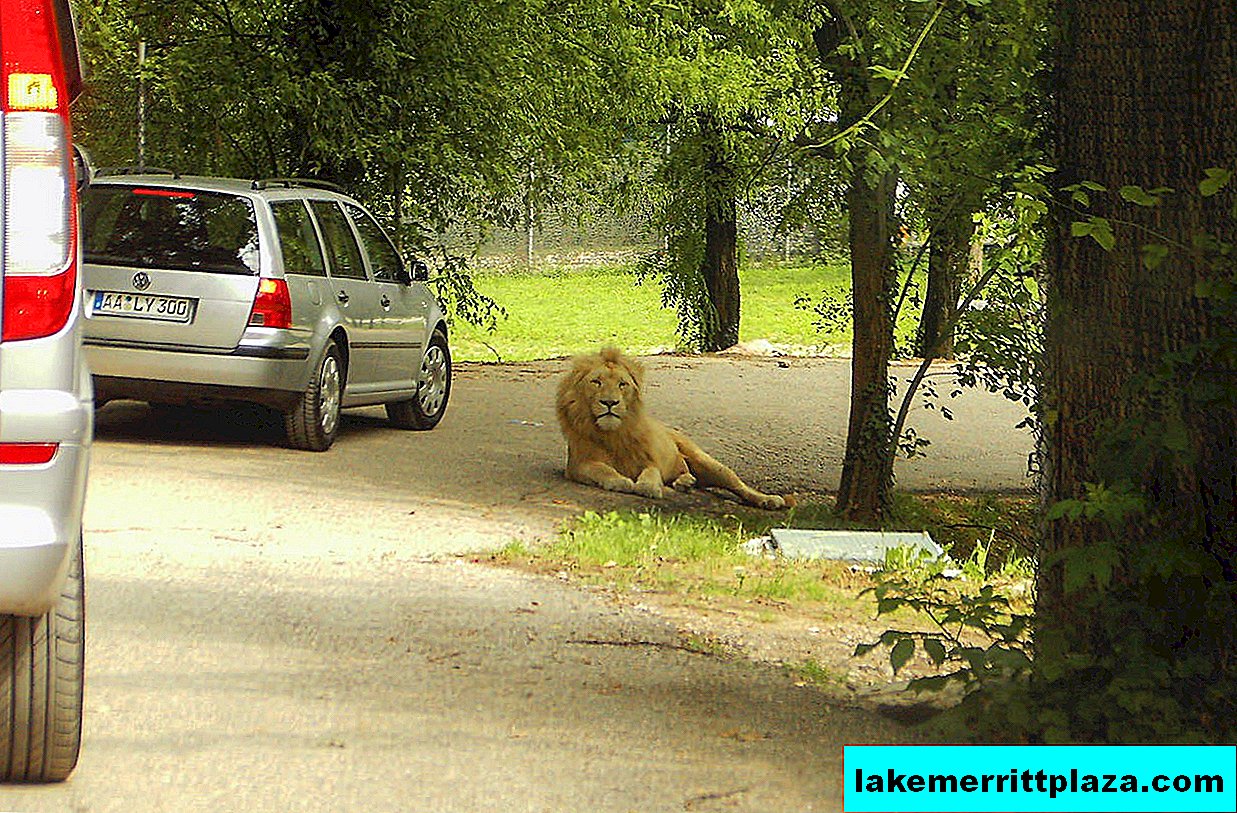
Safari Park "Natura Viva", photo by Micky Del Favero
The huge Natura Viva Zoo (Safari-Park Natura Viva) is divided into two zones: Safari Park (visitor in the car, animals “on the outside”), Fauna Park (for walking). Here you will see animals from all over the world. There are “workshops” for children under the guidance of biologists, and a daily ticket is € 20.
Monte Baldo Mountain
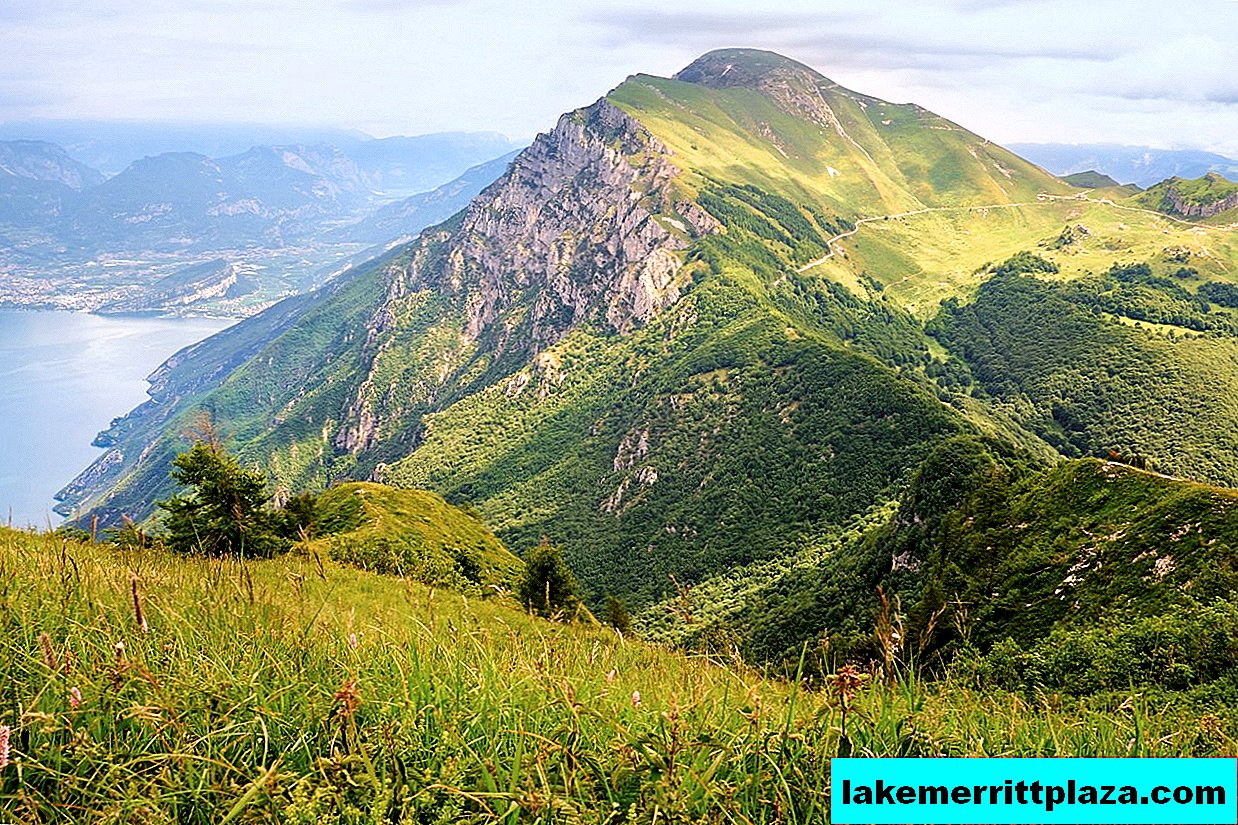
Monte Baldo Mountain, photo by Jani Palsamaki
Monte Baldo is a mountain on the shores of Lake Garda, which offers stunning views of the surroundings. Climbing the mountain is possible by cable car Malcesine, height 1760 m.
Events, Holidays, Events

VinItaly Festival (photo: Bruno Cordioli)
In March-April, Verona hosts the VinItaly wine festival, which brings together winemakers from all over the country. Tastings, workshops, fun performances. These days, Verona has fun around the clock.

Opera Festival at the Arena di Verona
The opera festival at the Arena di Verona takes place in the summer.
On a special occasion, Verona takes place on February 14 (Valentine's Day), September 16 (Juliet's Birthday), as well as the carnival during the Pancake Week.
Attracts tourists and fair Santa Lucia in December, with numerous tastings of national dishes.
Weather in Verona
The climate in this part of Italy is mild, due to the proximity of Lake Garda and the Adige River, humid. The peak of precipitation occurs in August, the best time to visit is May, June. At this time, the temperature rarely goes beyond normal (+22 - +26 degrees), and rains are unlikely.








A bit of history
Verona arose on the site of ancient settlements of local tribes. At first, a citadel was built here, designed to protect Rome from the invasion of the barbarians. With the expansion of the borders of the Republic, and then the Empire, the fortress lost its strategic purpose, and the city itself became an important transport hub connecting the north of the country with the south. Due to its location at the crossroads of important roads, Verona becomes a thriving commercial and cultural center. The monumental buildings (many of which are still preserved) gave the city solidity and created an imperial atmosphere.
The Middle Ages left a strong imprint on Verona. At first, the city was the possession of individual noble families, each of which sought to expand and decorate it. Verona then becomes part of the Republic of Venice. After there were "Austrian times", and only in the second half of the 19th century Verona returned to Italy. Interestingly, during all periods of its long history, the "capital of romance" has always been an important military target, which is still the case. It is here that one of the NATO headquarters is located, controlling all of southern Europe.
How to get to Verona:
By plane
The most convenient way to get to Verona is by plane. The city has Verona International Airport (Aeroporto di Verona-Villafranca), also known as Valerio Catullo Airport (Valerio Catullo) or Verona Villafranca Airport (Aeroporto di Verona-Villafranca).
Find a cheap plane ticket →Atv Airport Bus No. 199 runs from Villafranca Airport to the center of Verona. He goes to the railway station of Porto Nuovo. Buses run every 20 minutes. from 6:35 to 23:35. Travel time is about 15 minutes., The cost of 6.00 euros. More information on the website atv.verona.it.
By train
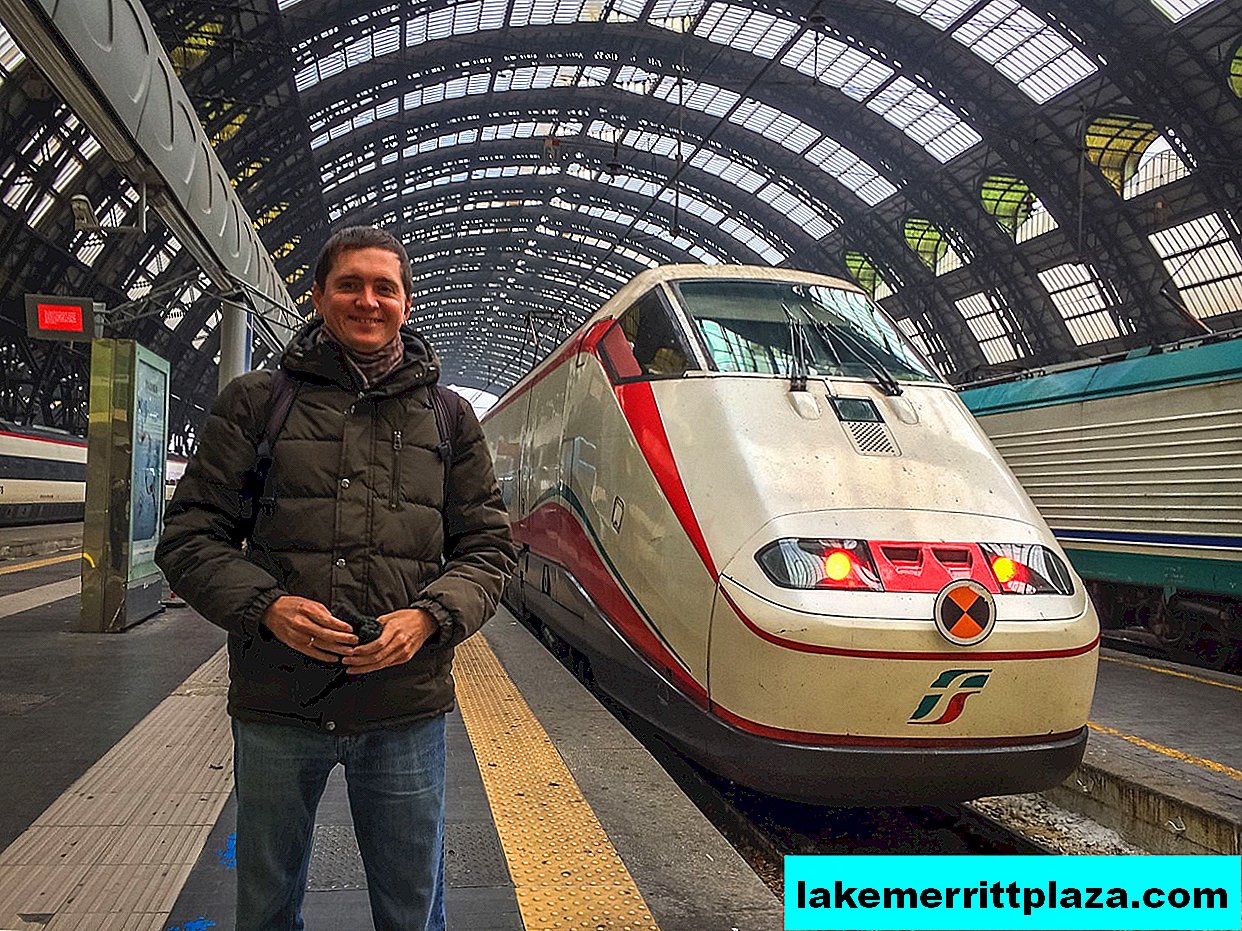
Verona Station (Stazione Porta Nuova)
From Rome, Milan, Venice, Verona can be reached by train (company trenitalia.com), which arrive at Verona Station (Stazione Porta Nuova).
Roma Termini - Verona Porta Nuova. Trains run every 2 hours, travel time is 2h 50 minutes, one way price is about 70 euros.
Milano Centrale - Verona Porta Nuova. Trains run every hour, travel time is 1h 21 min, one way price is about 25 euros.
Venezia Santa Lucia to Verona Porta Nuova. Trains run every hour, travel time is 1h 10 min, one way price is about 20 euros.
By bus
Jerez Verona has many bus services, both international and Italian. Here are some sites where you can see tickets: sena.it, lavallelinee.it, eurolines.fr, ventrebus.com, tourbus.cz.
All options for getting to Verona.
How to get to Verona →

